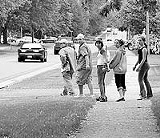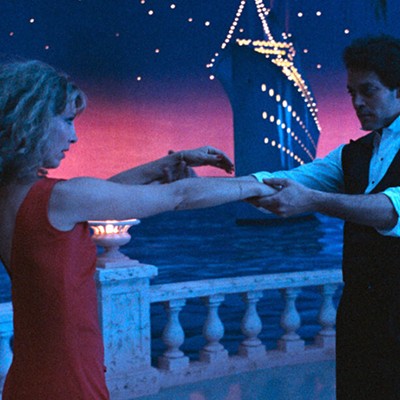[
{
"name": "500x250 Ad",
"insertPoint": "5",
"component": "15667920",
"parentWrapperClass": "",
"requiredCountToDisplay": "1"
}
]
Going west from Kodak Park these days, you've got your work cut out for you. Traffic on Ridge Road, now in the destruction phase of a multi-million-dollar rebuilding project, moves fitfully. Within the city limits, a shallow trench runs down the south side of a rocky road. Across the way, debris and dust throw down a challenge to pedestrians: You won't get hit by a truck, but you know who's boss.
Then you turn onto Bonesteel Street. One moment there's noise all around you, and you're conscious of the busy-ness at the intersection. The next moment, you've coasted down a tiny slope --- yes, there actually is a ridge, you tell yourself --- and into a zone of quiet.
Then you cross another line: Just a couple hundred feet down from Ridge Road, you leave the city of Rochester and enter the town of Greece.
It's a smooth transition. The color of the street signs change, but not much else.
The neighborhood is mixed. On one typical block lined with post-World War II bungalows --- the A-frame architecture that has "GI Bill" written all over it --- a new home is being framed. Another dynamic is revealed around the corner: "Whoso Despiseth the Word Shall Be Destroyed," says a weathered lawn sign on a corner lot.
This is largely a zone of apartment complexes and townhouses. Some bear evocative names like Glenora Gardens and Holyoke Park. Others take the direct approach, pinning down their street addresses: Mt. Read Gardens, Bonesteel Manor. All of them advertise their rental office phone numbers. Most of the complexes are open-plan, with shade trees now grown large enough to distract from the visual sameness. Holyoke Park is a little different: a complex of long, two-story buildings that protect an inner yard with a rec center and swimming pool, and a wide lawn sloping up to West Ridge Road.
All quite unremarkable, you think. But things are happening here at the Greece-Rochester line that hold significance for the larger community.
First, the border area stands apart from the whole of Greece in its demographics. The differences are not enormous, but they're large enough to confound some stereotypes of "the burbs." You could say the neighborhood around Bonesteel Street and Ridge Road --- immortalized as Census Tract 139.02 --- is a demographic blend.
How so? The town of Greece is overall a little "whiter" than some other suburbs that share its income levels and housing values. According to the 2000 census, Greece's population of around 94,000 is 93.4 percent white and 2.9 percent black. For comparison, Henrietta's population of around 39,000 is 84.3 percent white and 6.9 percent black. According to figures collected in the City of Rochester's comprehensive plan, as of 1996, median home values in Henrietta and Greece were running neck-and-neck with each other (and with those in Chili, Ogden, Sweden, and Wheatland) at something under $100,000.
But consider Census Tract 139.02 vis-à-vis the town of Greece. According to the 2000 census, the tract is 84.8 percent white and 5.5 percent black, compared to the whole town at 93 percent and under 3 percent. The median household income in the census tract in 1999 was $30,656; in Greece, the median that year was $48,355. The town, which stretches far west and north of Bonesteel and Ridge, has 939 families living in poverty. One hundred fourteen of these 939 families live in Census Tract 139.02.
In short, Census Tract 139.02 is in the middle in more ways than one: somewhat more culturally and racially diverse than the nearby city neighborhoods, but also somewhat more economically "challenged" than most suburban neighborhoods.
Thus the area around Bonesteel Street has no choice but to be a bridge between communities.
Mostly this fact is discernible in numbers and ambience. But there's also some palpable evidence. Take what's going on within and outside the walls of Holy Name of Jesus Church, a Roman Catholic congregation on the Greece end of Bonesteel.
In many ways, Holy Name is a typical suburban institution. The church's broad, well-clipped lawns and bright, modernist architecture --- accented by an open-aired tower with three dark bells --- seem to be playing the part. But some Holy Name congregants are conscious of their impoverished urban neighbors, and they're acting accordingly.
The parish, says the pastor, Father Charlie Manning, isn't involved in neighborhood programs as such. But some Holy Name members and staff, he says, are taking part in "ministerial activities" between neighborhoods across the city line. For example, the church is one of the most significant participants in the "IMPACT" program ("Imagine Mission, Peace and Compassion Together"), an urban-suburban youth program under the auspices of the Roman Catholic Diocese.
An IMPACT program description tells how things work: "Senior high teens serve regularly as tutors in an urban Catholic school... as mentors in an ecumenical drop-in center, and work at an urban clothing center." The program furthers "social justice issues in light of Scripture and the social justice teachings of the Catholic Church."
Right now, IMPACT participants at Holy Name are gearing up for a "SALT Retreat" ("Service Action Learning Center Teams") July 13 through 19. The retreat, termed an "urban immersion experience," will place high school juniors and seniors temporarily with various service organizations.
What exactly will the kids do? "They stay in the Urban Center [at Lyell Avenue and Austin Street] for a week," says Lynette De Jesus, Urban Youth Ministry Coordinator for the diocese. "They work from nine to three every day --- the kids love it," she says. The work sites, she says, include Cameron Ministries, St. Peter's Kitchen on Brown Street, and Bethany House on the northeast side. The students also work with neighborhood kids at the House of Mercy on Hudson Avenue. "That's one of their favorite places," says De Jesus.
"It's a big commitment for the kids, a whole week in the summer," says De Jesus, who came here from Miami, Florida, and has been a fair-housing advocate, tutor, and counselor.
De Jesus gives special credit to Holy Name staffer Anne Casey for coordinating the suburban side of the equation. (Casey couldn't be reached for comment.)
The IMPACT program and SALT Retreat are part of an overall effort to create a "comprehensive youth ministry model" that explicitly diverges from the familiar "CYO" (Catholic Youth Organization) of years past, says a diocesan backgrounder. Where the CYO emphasized social events and athletics, the new wave stresses "sharing the unique gifts of youth with the larger community."
This religious re-orientation fits well with secularist approaches. Places like Bonesteel and Ridge, undergoing change and exerting demographic pressures in two directions, are where much of the action is.
"It's the older suburbs, stupid," Minnesota-based social demographer and regionalist Myron Orfield told the National Housing Institute in 1998. He called inner-ring suburbs "the pivot point in American politics" and "the reformers' key political allies." He also advised everyone to "reach out and organize on a personal level."
It could be that Holy Name adults and youngsters are building --- and crossing, as opposed to using for a daily commute --- the very bridges necessary for this.
Speaking of Greece, Bonesteel Street
-
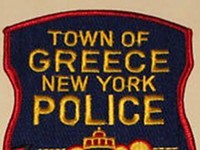
Town of Greece names Drew Forsythe new police chief
Dec 18, 2020 -

Top court says Greece prayers are constitutional
May 5, 2014 -
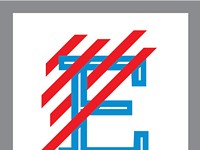
Election guide
Oct 23, 2013 - More »
Latest in News
More by Jack Bradigan Spula
-
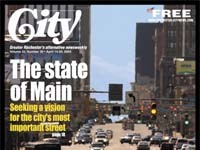
The state of Main
Apr 14, 2004 -
School improvement: the price is wrought
Apr 7, 2004 -
Hour of power
Mar 31, 2004 - More »
